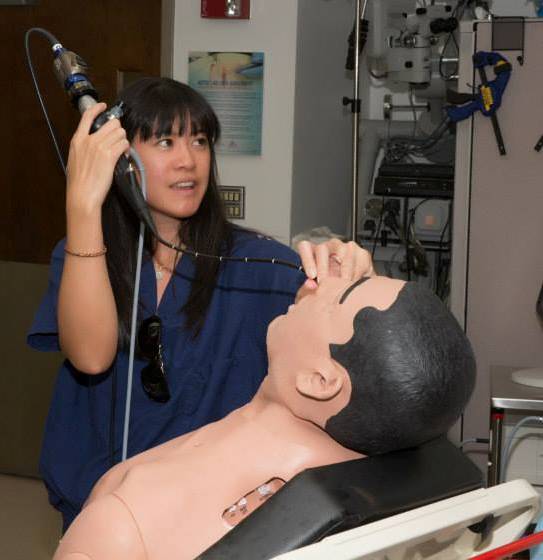Vivienne Ng, MD, MPH, assistant professor and director of Emergency Medicine Simulation, continues to expand simulation education in the Department of Emergency Medicine, adding teaching labs using fresh cadavers and pig heads for residents to practice rare procedures before they perform these on patients. Dr. Ng joined the DEM faculty two years ago with specific goals to more formally and regularly integrate medical simulation into the resident and medical student curricula.

In addition to these new innovative labs, simulation training in the department regularly includes group learning with medical scenarios using high fidelity mannequins and procedural training with task trainers in the College of Medicine’s Arizona Simulation Technology and Education Center (ASTEC).
“I write the majority of the simulation curriculum anew, which is evidenced-based and aims to teach specific concepts to the residents,” said Dr. Ng. “If the situation is amenable, we can conduct research on the validity of the actual training sessions, as well.”
“Educational goals in simulation can be individualized, team-based or hospital-based, and most successfully, interdisciplinary,” said Dr. Ng, who is fellowship trained in simulation education and research. “Training can involve learning how to do a procedure and practicing it to reduce mistakes, how to function better as a team to resuscitate a patient, how to treat rare medical cases, and how to work together in crisis situations, such as mass casualty events or natural disasters.”
“Since the Accreditation Council for Graduate Medical Education (ACGME) limited in 2011 the number of resident work hours, residents have less exposure over time to certain high stakes medical cases and procedures,” Dr. Ng said. “That limitation, combined with the need for quality improvement and standardization, patient complication reduction, and improved teamwork and communication, has led to an expectation to use simulation for continued education in these areas to improve patient care.”

